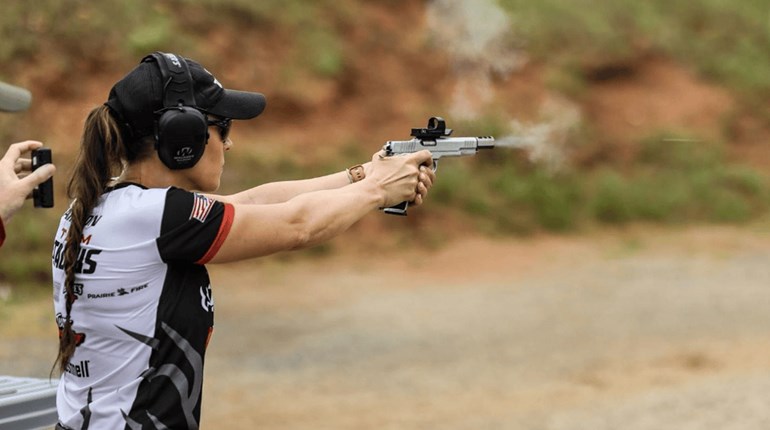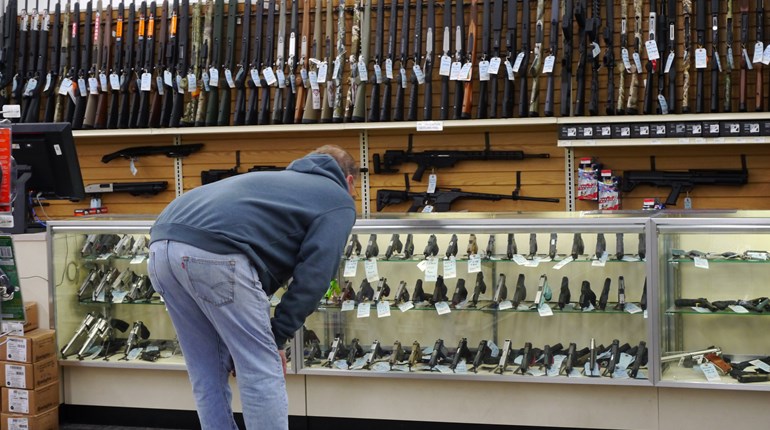
“Dude, there’s no way he’s that fast!” I was on the phone with my close buddy Von when he was telling me about how he showed the guys in his department my reload videos for the first time.
“It’s definitely CGI”, they said. “You can’t even see the magazine.” What compliments. Von and I shared a good laugh about it as he routinely helps me with classes and sees firsthand the “CGI reload effect”.
In my progression over the years from a beginner USPSA shooter in 2018 to now, I have had many obsessions in my skill development. But if there was one I definitely chased down the rabbit hole, it was reloads.
Reloads are one of the skills that are just as satisfying to get right in dry fire as it is in live fire. There’s something about the raw hand speed combined with the precision needed to guide the magazine into the magwell of the gun.
I started my journey and made USPSA Grand Master classification in Production division first, so my reload journey started without the magwell even (my fastest Production reload shot to shot on a timer is 0.73 seconds, with my Limited gun it’s currently a 0.65). Add to this a high level of visual awareness of what’s going on, and doing fast reloads almost looks like a magic trick. Now you see it, (don’t blink) now you don’t. Very cool and a lot of fun. Unless it’s been beaten, in a Robert Vogel class I hosted in 2020 I was able to do an on-demand run of four aces (2-reload-2) in 2.06 seconds with my Production gun, a CZ Shadow 2. He said that was the best a student had done in a class with only one attempt. Robert Vogel was one of the first ones to start me into the obsession by demoing sub-two-second runs for the small private class I had with him in Ohio in 2018. My current best: four aces at seven yards with all A-zone hits on a single first run in 1.86 seconds. (You can view that on my Instagram page here.)
In this article, I want to share with you how you too can make your reloads look like magic to impress your friends.
NO. 1: FIGURE OUT WHERE THE RELOAD IS GOING TO HAPPEN AND MAKE THE GUN CONFORM TO THE MAGAZINE
Something I find is that often, people want the gun to be in a certain spot. Some reload low and closer to their bodies and some keep the gun high and out. If that works well for them, that’s not something I’d correct, but personally speaking I want to first figure out where the mag goes and then make the gun conform to that spot. This is the most likely place the reload wants to happen and the most natural for you, so why try to fight the natural efficiency of motion?
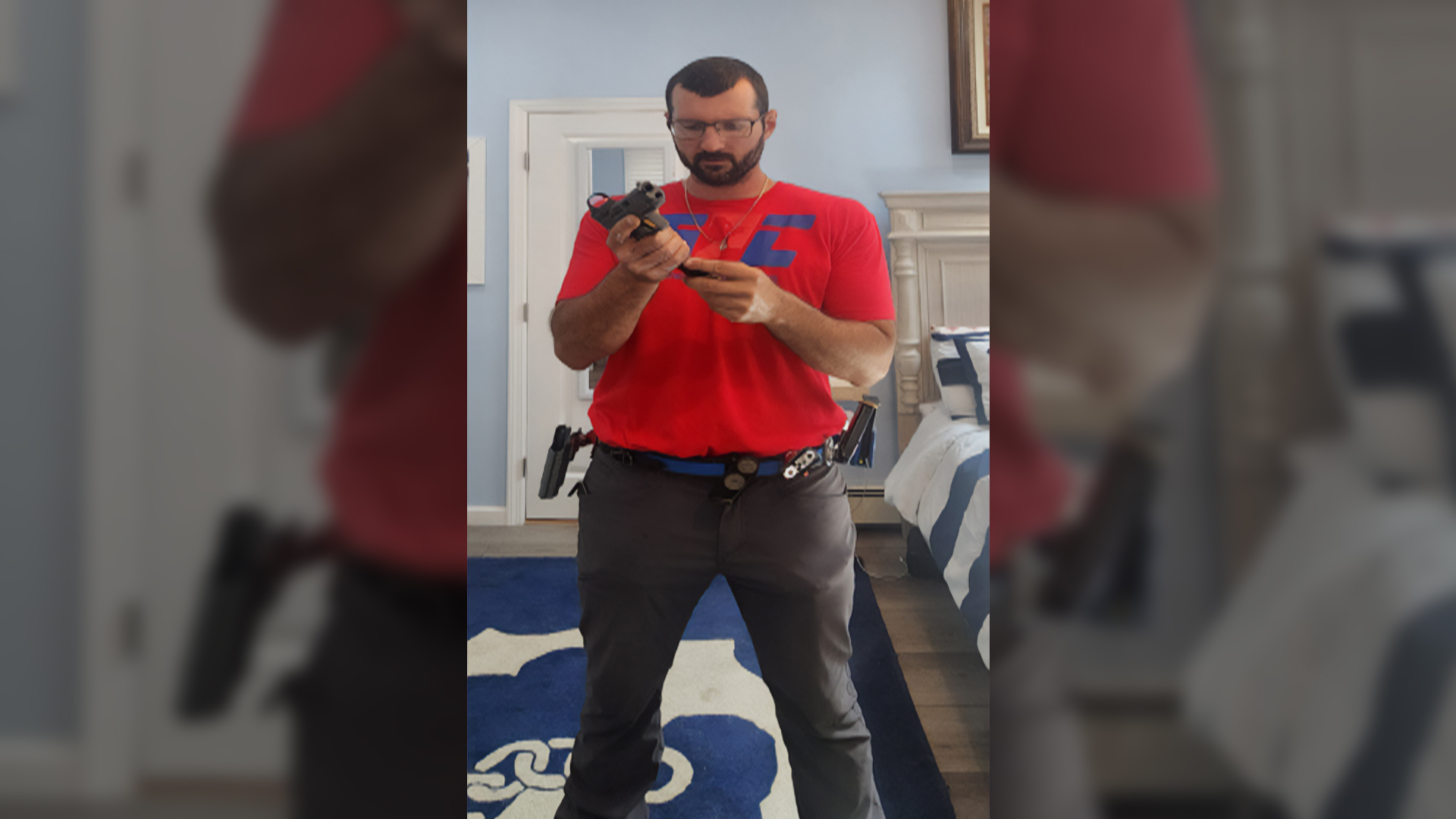
HOW TO: Put both hands up like you’re firing your gun. Take your firing hand away. This removes the influence to do the reload where you used to do it. Grab the magazine and bring it up to where it naturally wants to stop. Do this several times and you’ll likely find it ends up in approximately the same place. I find this place for most people to be about chest height with the magazine about eight to 10 inches away from their body. Then you can place the gun in that location and you’ll likely find that the magwell is pointed toward your mag pouch. You likely won’t see into the magwell, that’s okay—seeing the bottom line of the grip is what I personally see (you can even put a mark around that area to help attract your vision).
NO. 2: HAND SPEED IS FREE TO THE MAGWELL, HOWEVER, YOU PAY THE TOLL AT THE MAGWELL
Much time is lost in how aggressively the magazine is retrieved and brought to the gun. People just move slower than necessary grabbing the magazine, and then they feel the need to rush the magazine into the gun and just try to “throw” the mag in. This may work at times, but it’s a recipe for disaster when something goes wrong. You need to think of the magazine grab as if it were an outstretched rubber band about to shoot at your friend (we all did this, right?). As soon as the reload is initiated, the rubber band (your support hand) snaps to the magazine and snatches it out of the pouch. Then you can basically use the massive amount of momentum created to carry the magazine up to the magwell of the gun. Another way I like to put this for students—“rush to the mag, relax to the gun.” Bleeding off all that energy to a precise stop at the magwell is crucial to high speed reload consistency.
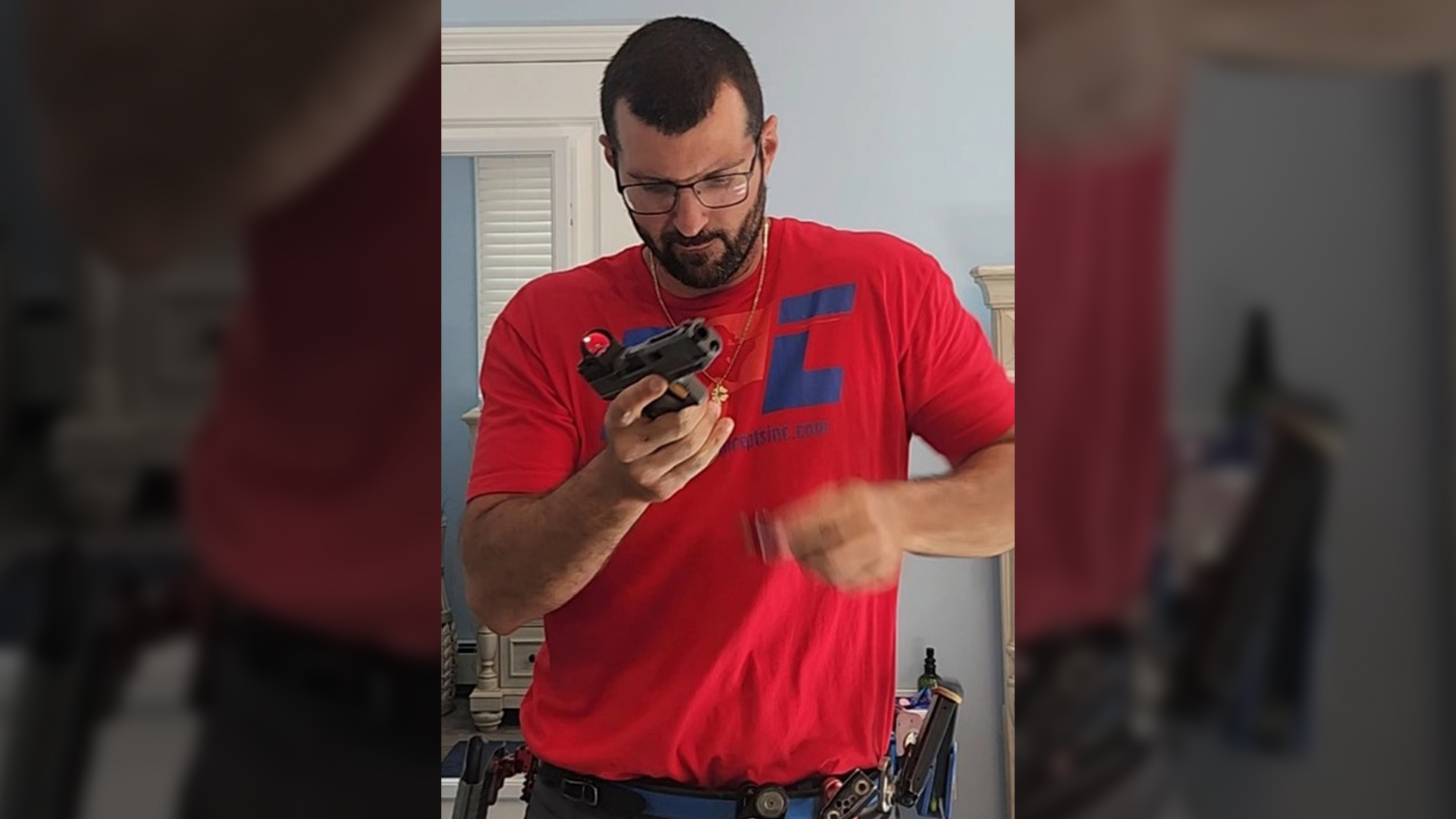
HOW TO: Set a par time for 0.5 or 0.6 (more if you feel you need that, but this is what you want to get to at the end). Start with the gun aimed on target. On the beep, you will grab the magazine quickly and bring it up to the gun. Your end point is that your index finger of a properly indexed mag (finger just below the bullet) is touching the bottom of the grip/magazine well. The mag will already be partially inserted in this case, doing a bunch of the work for you in confirming the mag is in the right place. This is the requisite hand speed to be able to accomplish a one-second reload.
NO. 3: CONFIRM OR ADJUST
When the magazine is at the “pause” point with the index finger touching the bottom of the grip/magazine well, this is where you ask yourself a simple question: Is the mag going in? If the answer is yes, put the magazine in the gun. No more, no less. If the answer is no, adjust the mag to be where it needs to be and put it in the gun.
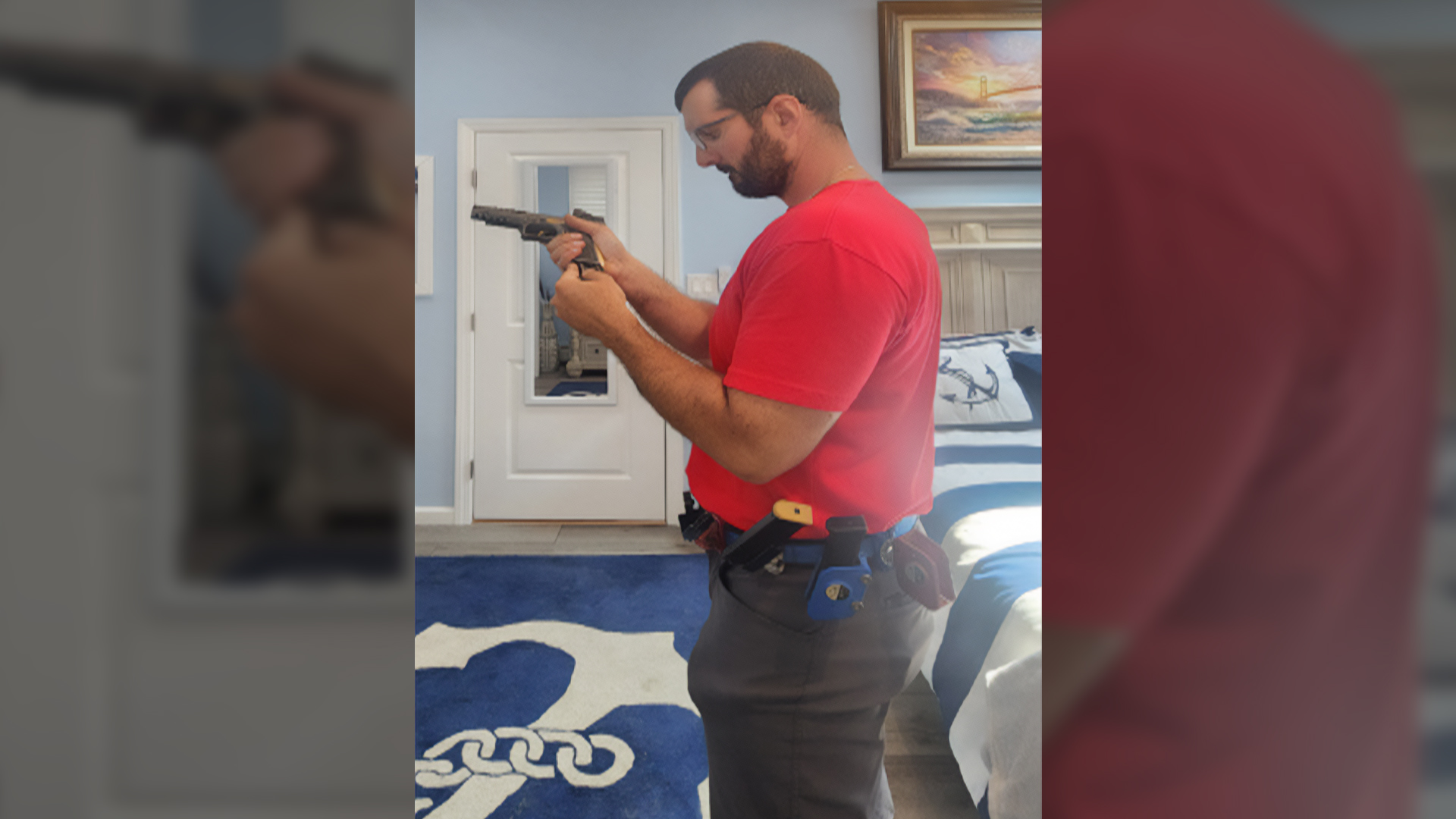
I find this simple yes-or-no answer allows for much less thinking to happen during a reload. This allows for higher consistency in reloads and a much quicker adjustment if there is a hangup. Make it simple and the execution becomes more of a probability. One thing—the “pause” is confirmatory in nature. You can choose to stop the mag in the magwell like in No. 2 above, but you don’t have to do that. Once you know the magazine is going in, put it in. What we want to avoid is release control of the magazine early and throwing it in the gun, but that doesn’t mean we need an excessive pause either.
NO. 4: TRIGGER BREAK EXIT
A term coined from Hwansik Kim during position exits, I retooled it for reloads as well. Think about this—when is a reload ever initiated off a beep in a match? Never. So once we have the requisite hand speed described in No. 2 above, we can pretty much get rid of the timer entirely. At this point, now we can just use reaction off the trigger break to initiate the reload. Getting quicker at this one thing will also translate into things such as quicker transition exits and position exits as well. Remember, when the slide starts moving in recoil, the bullet has long left the barrel. You’d be surprised at how much you can get away with in this instance! You can shave a good bit of time off your reload times here just by getting good at this.
See the first few in action on this Instagram reel here.
HOW TO: Start aimed on target. Press the trigger quickly and decisively and immediately initiate the reload. This is a fun one to try live as well, as you learn not to return the gun in recoil, rather start to pull the gun into the reload position to save time. I like to demonstrate this with one shot and then after the reload, two shots.
NO. 5: DROP THE ELBOW
A common thing I see people doing when reloading is “chicken winging” their reload path. The magazine comes out of the pouch and the elbow then takes a bit of an arched path to bring the magazine to the gun. This makes the magazine take a path that isn’t quite predictable, and the magazine rotates into position late.
HOW TO: As soon as you’ve cleared your mag pouch, drop the elbow next to your side. You’ll find the mag takes the quickest path of rotation to end up in the reload position. This is shown in this recent Instagram video I made you can find here.
NO. 6: SEE MORE, REACT FASTER
It’s often overlooked, but the value of pushing your visual and information processing system to do more is a simple, yet effective, way to get more out of every skill you’re training. Pushing yourself not to slow your mechanics down, but to speed up your vision and processing to see more of what’s going on will help a ton. I’ve often been able to read the numbers on magazines when doing reloads at full speed while working on this specific thing. It’s crazy and awesome when you have this level of awareness, and you can really pick out a ton of things to help improve your abilities. This is how I’m able to give you the information outlined above as well.
HOW TO: Now, you’re not looking to go all-out with this. Instead, push yourself to see more visually a little bit at a time. It will be uncomfortable every time you do this, and that’s to be expected. Change doesn’t happen by staying within the boundaries of your comfort zone, it requires a nudge. I read in the book “Peak Performance” by Steve Magness and Brad Stulberg that it’s about a four percent push outside your comfort zone that creates the best adaptations. While I can’t quantify four percent visually, we can say mild to moderately uncomfortable will be about that sensation we are looking for. Try to see things like:
- The top round getting to the grip.
- The numbers of the witness markings on the magazine.
- Some feature of the magazine itself (a shiny spot, a ridge, etc.).
The more detail you try to see, the more you will be able to troubleshoot and correct at speed. And this is how we grow.
This guide will help you get started on your CGI reloads. Reloads do take some effort, but once you get it right, they will become a rewarding and fun way to show results, along with impressing your friends.
Article from the May/June 2024 issue of USPSA’s magazine. All photos courtesy of Rob Epifania.













